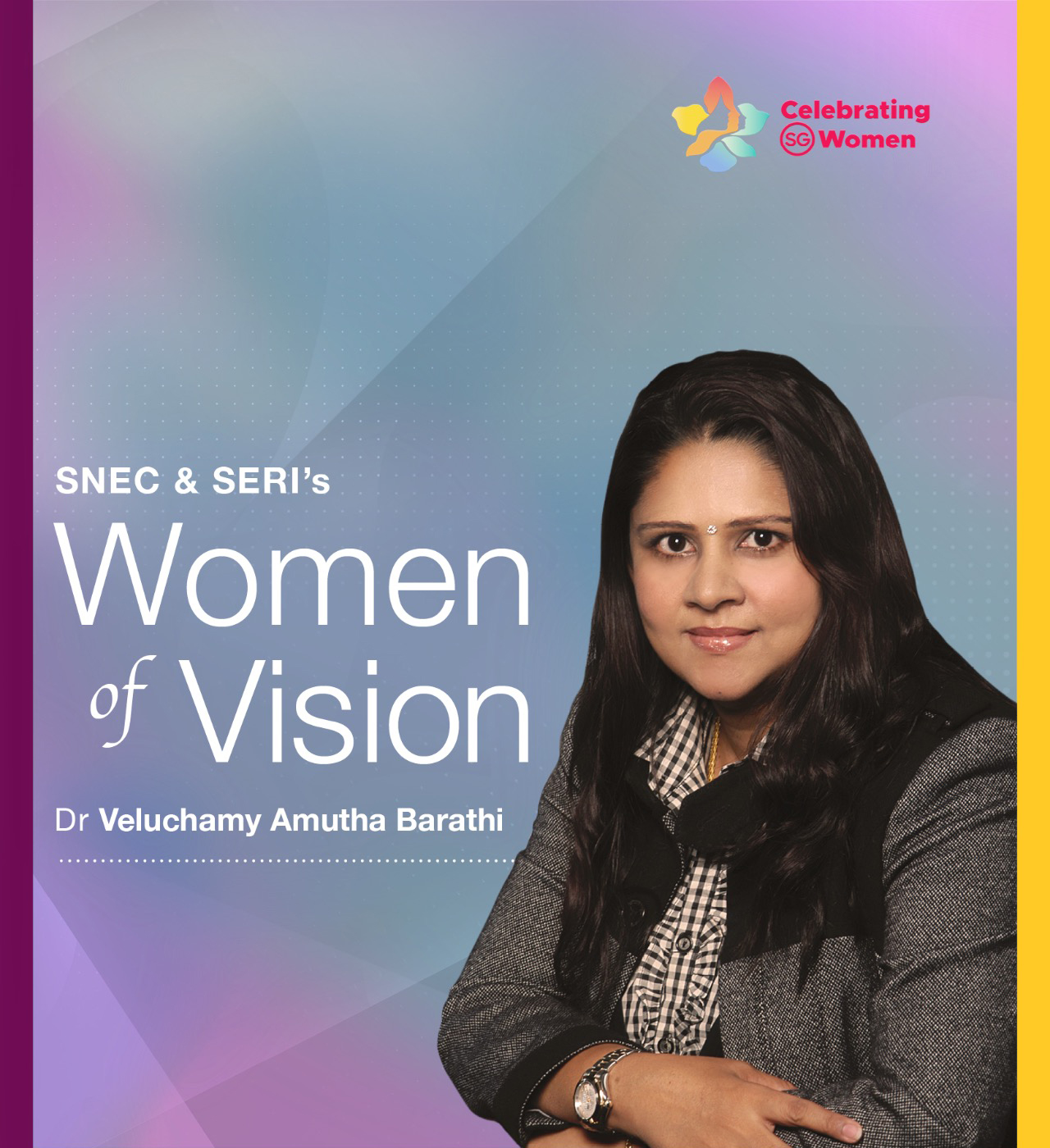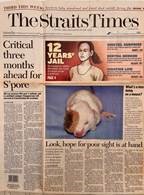Women of VisionCelebrating SG Women
In the Year of Celebrating SG Women, we present stories which showcase and celebrate women’s multi-faceted contributions and progress at SNEC and SERI.
Join us to honour and acknowledge our team of amazing women who have made impact in the field of Ophthalmology, inspiring those around them with their brand of ethos in life.

Dr Veluchamy Amutha Barathi
Head, Ocular Translational Pre-Clinical Model Research Platform, SERI
As HOD, do you lead by rolling up your sleeves, or are you more the nurturing type who helps to get rid of obstacles in the way of your team?
I joined SERI back in 1999, when my daughter was still an infant, and climbed up the ranks to my current position. Thus, I am well aware of roadblocks faced by my team members. My administration style entails both hands-on and remote management. I have put together an excellent team — they are like the gears of a well-oiled machine. Time to time, I have to oil the process to prevent the gears from overheating. On any given day, to effectively lead my team, I have to assume many roles — leader, lecturer, researcher, mentor, discipline master, and even student.
How much of the research that you are pursuing has been inspired by personal experience?
Prior to becoming an ophthalmology scientist, I was a veterinary doctor. I was — and still am — passionate about treating and caring for animals. When I was hired for this role, it was like being paid to have my cake and eat it, too! I pioneered the lens-induced myopia model in mice, which was featured on the front page of
The Straits Times (8 February 2003 edition). It was used to investigate the molecular role of atropine eye drops in the retardation of myopia. Currently, this model is adopted quite widely in the myopia research community, and has been replicated in other myopia research facilities around the world that focus on genomics and pharmacological intervention for myopia. I still remember how I had to figure out ways to attach spectacle lens in the eyes of a lab mouse, such as using tiny pieces of Velcro. It was like Edison trying to have a breakthrough for the light bulb! The eureka moment did eventually happen.

What research are you working on now, and how will it benefit patients?
My current research work entails Pathophysiology and Pharmacological intervention on major sight-threatening diseases, such as myopia, glaucoma, ocular infections, retinal angiogenic/neurodegeneration, and inherited retinal degeneration. My translational pre-clinical research work has generated new publications on ocular models, techniques, and insights on ocular diseases. These publications educate clinicians and scientists in the biomedical field. The research that I lead improves services and treatments for current and future generations, including both young and aged populations, thus aiding in development of new tests for clinical diagnosis, improving quality of vision, treatments and processes that could eventually help your children or even grandchildren.
What are your proudest achievements in your time with SERI so far?
There are two key moments that I am most proud of. The first was when SERI’s pre-clinical ophthalmic research lab was recognised as a ‘State-of-the-Art National Ophthalmic Research Facility’, and began attracting both national and international academic/industry partners to conduct key ophthalmic translational pre-clinical research in Singapore. The other memorable episode occurred on 19 March 2016, when our esteemed Prime Minister, Mr Lee Hsien Loong, and his wife, Ms Ho Ching, paid a visit to our research facility. I was tasked to take them on a tour of our renowned ocular model research capabilities and cutting-edge ophthalmic facility. It was quite something to witness the inquisitive nature of Mr Lee — my ‘gears’ and I will cherish memories of that day for a long time to come.
Click
here to check out the
Women of Vision series.
